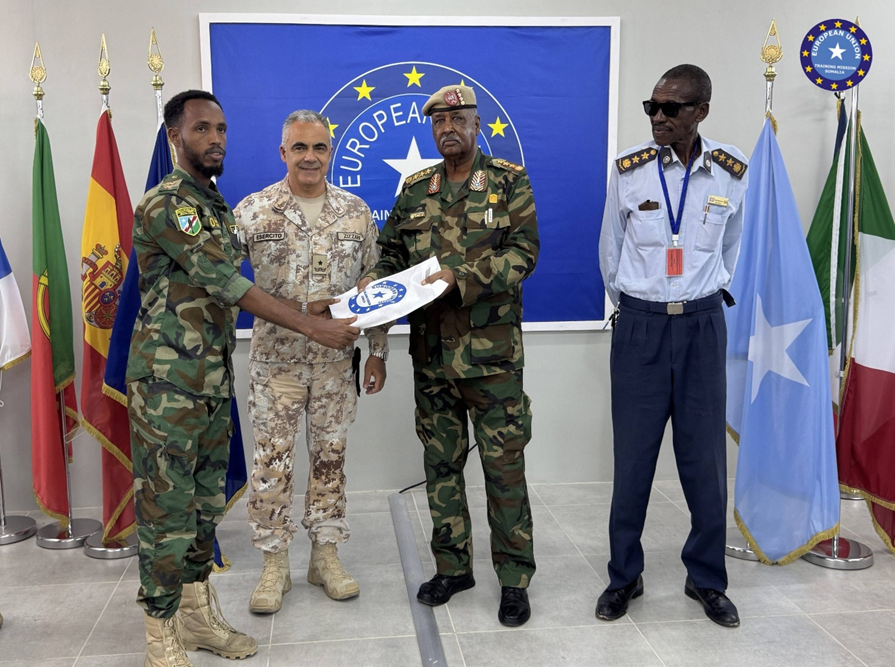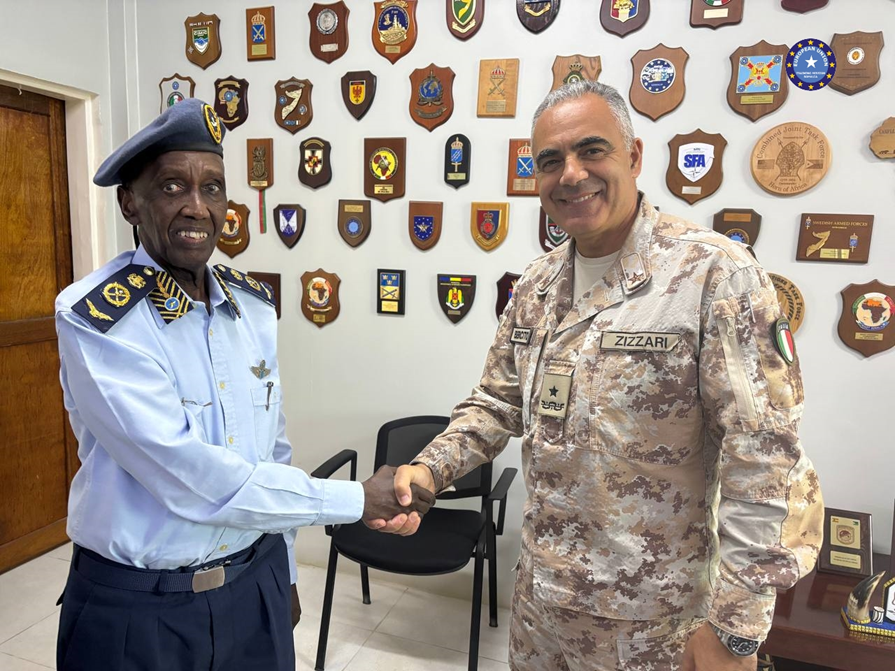After decades without functional air capability, Somalia has gradually rebuilt its air force through partnerships with international organizations—including the United States, NATO-affiliated training structures, and the United Nations Support Office in Somalia (UNSOS).

🛫 Launching the Revival: US-AFRICOM Engagement
In early 2022, the Somali Air Force Commander, Brig. Gen. Mohamud Sheikh Ali Mohamed, publicly signalled the start of bilateral cooperation with the U.S. Air Force. Having operated no aircraft or flight crews since the civil war, Somali officials welcomed U.S.-led ISR (intelligence, surveillance, reconnaissance) operations launched from Baledogle Airbase, even after American troop reductions in 2021. While Somali aircrew training had paused, U.S. ISR remained continuous—and training partnerships began resuming.
Mohamud stressed that the Somali Air Force had no active pilots or technicians and needed comprehensive training that the U.S. support would gradually provide.
✈️ UNSOS Aviation Liaison Officer Course
Beginning in 2025, UNSOS rolled out a specialized six-day training course for Air Liaison Officers (ALOs) drawn from Somalia’s Security Forces, Civil Aviation Authority, and ATMIS personnel. Around 30 trainees per cohort are trained monthly in essential aviation operations: Forward Operating Base management, flight planning, cargo handling, medical evacuation procedures, aviation security, and pilot communication.
Lieutenant Hussein Ahmad Osoble, one participant from the Air Liaison corps, praised the course for equipping personnel with practical skills ranging from airport firefighting to coordinating safe flight operations—crucial competencies as Somalia regains aviation sovereignty.
🎯 Danab Brigade and Multi-Domain Exercises
Somalia’s elite Danab Brigade has participated in multinational exercises such as Justified Accord in 2024 and 2025, jointly hosted by U.S. Africa Command and partner nations in Kenya. These exercises include air–ground integration training, where Somali personnel are trained alongside US and allied troops to coordinate air support during peacekeeping, crisis response, and humanitarian scenarios. Somali air force and aviation officers shared logistics, command planning and coordination roles in these simulations.
Though Somalia itself still lacks air platforms, these drills build interoperability and prepare Somali officers for future roles in a reconstituted air arm

🏫 Technical Training in Turkey and Beyond
Somali air force cadets and technicians have repeatedly attended aviation training in Turkey since 2014. Turkey’s Camp TURKSOM remains a principal base for Somali trainees—not only in army or commando roles, but also for air aviation cadets, some of whom receive flight training via Turkish partnership. By 2023, thousands had graduated from Turkish-led exercises, including foundational aviation systems training still absent in Mogadishu.
As technical officer General Mohamud has acknowledged, training overseas is critical—particularly for creating air traffic controllers, maintenance personnel, and eventually pilots. Discussions have reportedly explored sending trainees also to Egypt, Oman, UAE, US, and UK for further specialization.
🚁 Equipment Deliveries and Hands-On Training
While hardware remains limited, Somalia received Bell 412 utility helicopters from Italy in mid‑2023 and three T‑129 ATAK helicopters from Turkey in early 2025, with plans for helicopter pilots and technical crews to be trained overseas. These helicopters will support troop mobility, casualty evacuation, and ISR missions. Somali pilots completed flight training abroad before their arrival, after which Turkish advisors oversaw integration flights. However, these aircraft remain technically operated under Turkish oversight.
🌐 Regional Standards and Network Membership
In 2023, Somalia officially joined the Association of African Air Forces (AAAF)—a continent-wide network supported by USAFE-AFRICA (U.S. Air Forces in Europe) and NATO-affiliated structures. Somali air force leadership signed the AAAF charter during the African Air Chief Symposium in Tunis, aligning Somalia with regional peer capability-building efforts. Membership facilitates exchanges, interoperability frameworks, and fire control standardisation initiatives.
🧠 Strategic Integration and Institutional Gaps
Despite equipment deliveries, Somali air force capacity—that is, pilots, technicians, air traffic controllers, and air operations planners—remains nascent. In 2023–2025, emphasis remained on building personnel competency in aviation-related roles, rather than deploying aircraft operations independently. Training programmes—including UNSOS and Turkish courses—are designed to create foundational institutional frameworks for eventual Somali-controlled platforms.
📌 Summary of Key Programmes by Mid‑2025
Component Description
- UNSOS ALO Program Six-day aviation liaison training covering flight ops, security, medevac, and airfield coordination
- US-AFRICOM Cooperation Support through ISR operations, gradual resumption of training pathways for Somali air personnel
- Turkish Training at TURKSOM Pre-service training of pilots and technicians; overseas instruction in multiple allied countries
- Multinational Exercises Participation in Justified Accord air–ground integration drills to build coordination skills
- AAAF Membership Somali signing into continental air forces network supporting interoperability and capacity building
- Equipment Delivery Bell 412 and T‑129 helicopters delivered with training support; Senegal aspirations still pending renewal
🚀 Conclusion: From Zero Toward a Functional Air Capability
Somalia’s air force—erased for decades by civil conflict—has begun to rebuild through a combination of liaison training, foreign ISR support, pilot/technician capacity building, and equipment acquisitions, all framed under international assistance. While the country still lacks operational aircraft it controls independently, its training infrastructure and personnel base are growing.
By mid-2025, Somalia has achieved:
- Extended ALO training through UNSOS, establishing aviation coordination professionals.
- Re-established links with U.S. and NATO-aligned structures, especially AFRICOM-led ISR support and exercises.
- Personnel training abroad (Turkey, US, UK, Gulf partners) in air traffic control, maintenance, flight operations
- Early equipment receipts supported by overseas-trained crews, although operational autonomy remains limited.
- Regional air force integration via AAAF membership to align standards and forge interoperability.
While rebuilding remains incremental and challenged by limited funding and infrastructure, Somalia is rebuilding the institutional and personnel foundations needed for a future air force capable of supporting sovereignty, counterinsurgency, and broader security missions.


